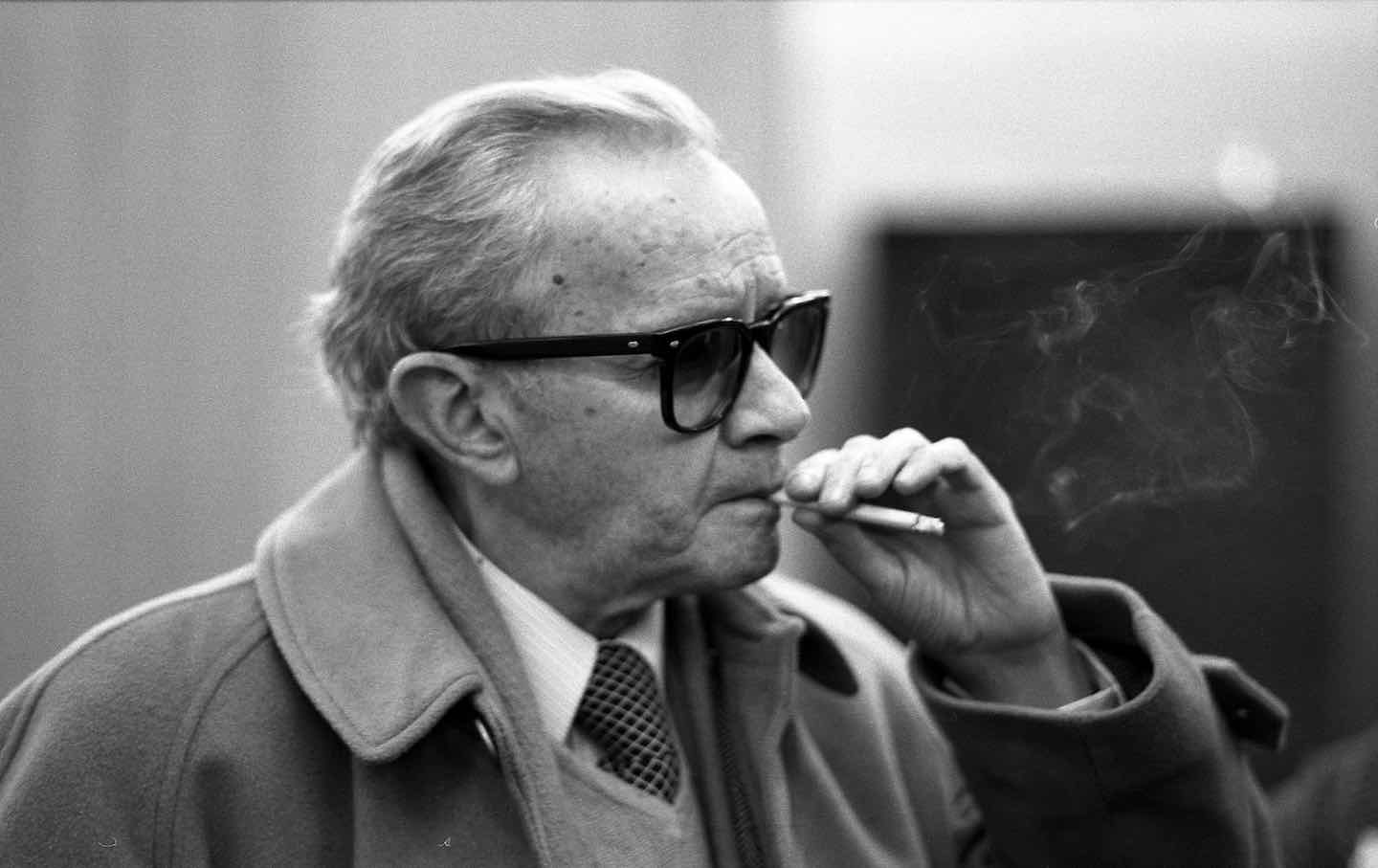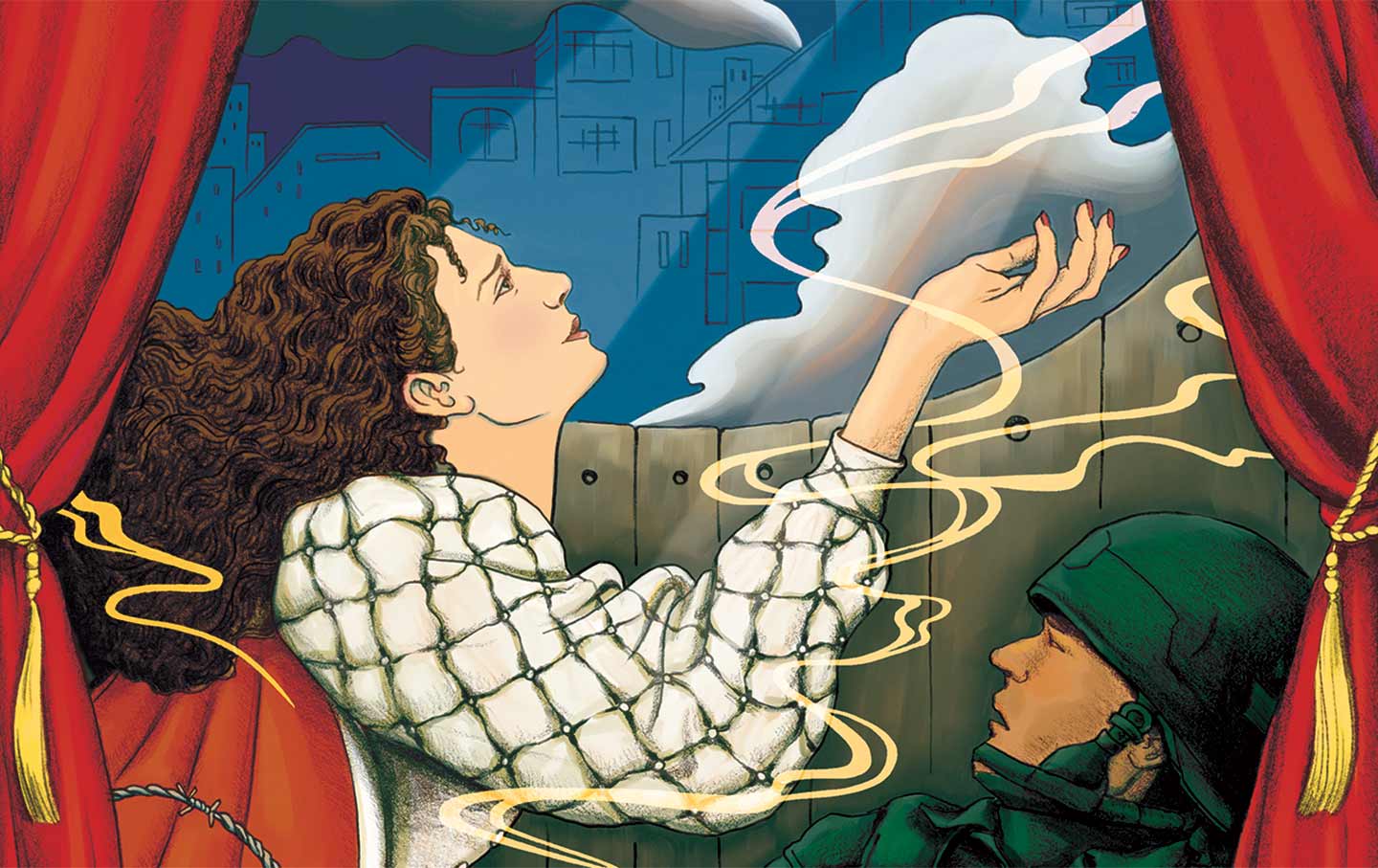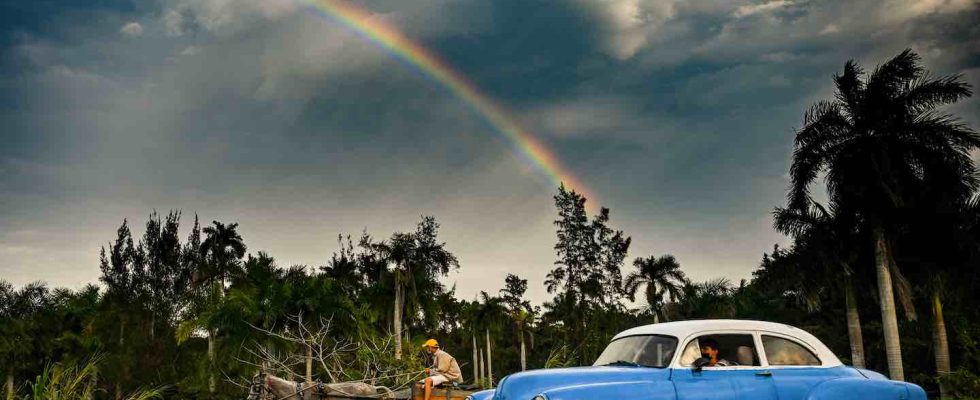Books & the Arts
/
February 6, 2024
In Cubanthropy, the critic Iván de la Nuez traces how the island nation and its diaspora shoulder the legacy of the revolution.
Havana, 2022.
(Photo by Yamil Lage / AFP via Getty Images)
The essayist and critic Iván de la Nuez left his native Cuba in 1991. At the end of that year, on Christmas Day a hemisphere away, Mikhail Gorbachev resigned as president of the Soviet Union. The USSR dissolved; the Cold War was over. Cuba had been no stranger to the exigencies of radical and rapid political transformation, but the loss of vital Soviet subsidies and trade with former Eastern bloc—forces that had effectively kept the country afloat for the previous two decades—meant that as the Soviet Union disintegrated, it took Cuba’s economy down with it. Cuba hawks in Washington and Miami licked their chops in anticipation of what they assumed would be the Cuban Revolution’s long-awaited demise.
Books in review
Cubanthropy: Two Futures That Happened While You Were Busy Thinking
Buy this book
In Washington, President George H.W. Bush feted the fall of the Soviet Union with a televised speech to the nation, celebrating what he called “a victory for democracy and freedom.” In Cuba, however, Fidel Castro—himself a fastidious student of history—read the moment quite differently. In those years, he took to concluding his speeches with a slogan proclaiming another imagined future: “Socialism or death.”
That Iván de la Nuez left Cuba at this exact moment is the unwritten thread that binds his recently translated essay collection Cubanthropy: Two Futures That Happened While You Were Busy Thinking. His essays probe the tensions between the island’s at-times-pyrrhic pursuit of sovereign nationhood and a globalized neoliberal order that cares increasingly little for the nation-state. He views these tensions through two perspectives: the first, Cuba’s fervent adherence to a socialist future during and after the Cold War; the second, the post–Cold War prism of capitalism’s ostensible victory, when, despite the supposed end of history, Cuba still clung desperately to the socialist hopes of the revolution’s first decades.
It is perhaps uncomfortable to acknowledge how wrong both camps’ predictions were. But to be living in Cuba as it was plunged into an economic crisis in the 1990s was not a matter of mere discomfort; it was a matter of survival. That specific imperative knows no geopolitical rivalry or ideological grandstanding—life is simply what a person must do to bridge her present with her future. It is in service to that possible future, one where the centrality of human need tempers the intransigence of ideology, that de la Nuez writes.
Given the extremity of the 1990s—what Castro dubbed “the Special Period in Times of Peace”—one can perhaps understand why de la Nuez calls Cuba a scale model of the world and its crises. But the Special Period is only one of the many possible instantiations of the role the island has played in both geopolitics and ideological debates since the 1959 revolution.
The Cuban Revolution’s ambitions had long been global. In the 1960s, diviners in Havana believed that the ouster of the dictator Fulgencio Batista following a years-long guerrilla campaign offered a replicable blueprint for nationalist liberation, first across Latin America and then the whole of the decolonizing world. Ernesto “Che” Guevara drafted his manual on guerrilla warfare, and the French political theorist Régis Debray heralded a “revolution in the revolution,” in which he juxtaposed Che’s prescription regarding the historical conditions necessary to produce Marxist-Leninist revolution in Latin America against the Soviet and Chinese models. In a tone somewhere between reverie and pity, de la Nuez notes how Debray and the generation of 1968 looked at Cuban-style guerrilla warfare as a “panacea” as well as a potential alternative to the rigidity and cruelty of Stalinism. In a world constrained by bipolarity, Cuba appeared to offer a new path forward—perhaps even many paths.
Current Issue

“It is not necessary to wait until all conditions for making revolution exist,” Guevara wrote; “the insurrection can create them.” Che and the Cuban Communist Party’s “Americas Department” thus adopted a foreign policy rooted in exporting its revolutionary model to other theaters in the hemisphere—against the expressed wishes of Moscow, under whose economic yoke Havana had yet to decisively fall. In 1966, Havana hosted the Tricontinental Conference, a historic summit where leaders from Latin America, Asia, and Africa gathered to address the Global South’s struggle against European and North American colonial and imperial domination.
It is rarely the fate of radicals to achieve the entirety of their ambitions, however. “What diversity there had been at the beginning was heading mercilessly toward uniformity,” de la Nuez writes of the revolution’s first dramatic decade. Guevara would die during a failed guerrilla campaign in Bolivia the year following the first Tricontinental. Not long after his death, Cuba undertook an ambitious project to harvest 10 million tons of sugar cane—an unprecedented yield. The initiative sought to reverse centuries of single-crop exportation and underdevelopment by generating the economic momentum that would lead to industrialization. By 1970, however, the country-wide sugar mobilization had failed to meet its ambitious goal. That failure gave way to the full-blown Sovietization of the Cuban economy, and Havana’s henceforth intractable dependence on Moscow came in exchange for relinquishing its attempts to export the Cuban Revolution.
Even so, the country’s significance continued to manifest outside its borders. Cuba was not only the communist specter haunting the Americas throughout the Cold War; it was also a pipe dream for student radicals and leftist intellectuals abroad who could celebrate the revolution’s accomplishments without bearing the sacrifices such radical change demands. De la Nuez recalls a photo of Che Guevara with Jean-Paul Sartre when the philosopher toured Cuba in 1960: In the image, the guerrilla lights the Frenchman’s cigar using a compact leather-bound lighter, a gesture in which de la Nuez reads one of the iconographic tropes of the revolution.
The cigar and the lighter, the intellectual and the revolutionary, formed a symbol that signified what the revolution could and could not promise to artists and thinkers who “made the Caribbean island the object of their revolutionary fantasies,” de la Nuez writes, and allowed them to “locate their discomfort with the malaise of Western culture somewhere else, somewhere picturesque and far away.” Thus, as happy as Sartre was to trade his usual Gauloise for a habano, he still deferred to Guevara to do the work of lighting it for him. Revolution is a terribly exciting thing when you’re not the one bleeding for it.
De la Nuez argues that the Cuban government’s attempts to export the revolution through armed insurrection and to stir revolutionary fervor through its iconography were not its most significant impacts abroad. Rather, he claims that the most palpable manifestation of the revolution overseas is the Cuban diaspora. It is not the guerrilla but the émigré, its theater not the battlefield but the makeshift raft floating precariously in the Florida Straits. To de la Nuez, Cuba is a “diaspora Nation…a nation that is fleeing, both physically and culturally, where survival involves a direct escape.” This holds true even in the case of those who remain on the island by choice or obligation—theirs is a departure in spirit if not in body, and such a state is, the author argues, distinctly Cuban. There is a sad sort of rhyme to this: Just as leftist intellectuals and activists placed their hopes in Cuba as a comfortably distant promised land, Cubans themselves have come to shoulder the weight of history with an eye to life beyond the island.
As totalizing as de la Nuez’s conceptualization of departure from Cuba may be, different groups of people have left the island at different moments and under distinct political circumstances, and these discrepancies matter. They offer a window into what the revolutionary project could and could not offer as time marched on, and how Cubans navigated that disparity. Episodes of Cuban history could easily be demarcated by waves of immigration: first the so-called “Golden Exiles” who left in the years immediately following the revolution—largely wealthier, whiter, and more eagerly welcomed by Washington; then the 125,000 Marielitos who left in a tremendous sea exodus from the port of Mariel in 1980, many less “desirable” to Washington for their darker skin and lack of capital, and because Havana itself seized on the boat lift to expel many people on the grounds of homosexuality, mental illness, or criminal history; then, in the 1990s, the balseros who fled the island in those feeble rafts, or balsas, during the Special Period. Tens of thousands among that wave were intercepted at sea by the US Coast Guard and temporarily incarcerated at Guantánamo Bay. That circuitous route through US-Cuban history took the balseros back to the very island they had fled.
Popular
“swipe left below to view more authors”Swipe →
Though Guantánamo, of course, calls to mind the United States’ illegal detention practices and systematic human rights abuses during the War on Terror, it is the Cuban ground on which the base is located that matters in Cubanthropy. De la Nuez does not spare Guantánamo in his excoriations, though the site’s deplorability demands little explanation: The more that “is written, filmed, exhibited, or painted about Guantánamo,” he argues, “the more useless metaphors become for understanding anything about it at all.” But while metaphor may be useless, history is not. Symbols may ring hollow; human suffering does not. Indeed, Guantánamo’s very presence on the island provides a “counterweight for the socialist regime, a cursed place capable of proving—quite spectacularly—that human rights are also violated under democracy.”
As this condemnation suggests, there are no heroes to be found in those two futures that never arrived and are already past. Cubans today know this all too well, and that knowledge proves even more tangible in the present than it did during the Special Period. Today, as the island buckles under the worst economic and humanitarian crisis it has faced since the revolution, Cubans have departed in record numbers to seek asylum in the United States.
The makings of the current crisis are multifarious. Not long after taking office, Donald Trump imposed restrictions on the ability of US citizens and residents to travel to Cuba or send remittances to family, slashing the amount of money entering the island. With the onset of the Covid-19 pandemic, tourism—long Cuba’s main source of revenue—ground to a halt. In 2021, the Cuban government implemented economic reforms that sent inflation through the roof. Unrelenting shortages of food and fuel not seen since the Special Period prompted historic mass protests across the island in July of that year, which state security forces met with the arrest of over 1,500 protesters, many of whom are still detained today.
Many on the island have concluded that there is no future to be found there. The 425,000 Cubans who have arrived in the United States over the past two years seem to agree. The chronology comprising Cubanthropy ends after Trump’s election but before the current crisis, and as wary as de la Nuez already was of crystal balls, today’s plight can only confirm his skepticism.
If narratives of the Cuban future no longer hold, however, the same may be said of the world at large. The author sees quite clearly that we are flailing, and young people around the globe—whether in Havana or Moscow or Washington—sense it too. Somewhere between nostalgia and utopia, between past horrors and future apocalypse, is our intolerable present. Cubanthropy prescribes humility and fastidiousness in our examination of that dolorous state. After all, it is not a perfect future, but a possible future that matters now.
More from The Nation

The MAGA movement—including the big man himself—has gone on the offensive against the megastar pop singer.
Chris Lehmann

In his 1955 masterpiece Pedro Páramo, he gave the bloody history of his country—between the rich and poor, landed and landless—mythic dimension.
Books & the Arts
/
Ratik Asokan

Enter the Ghost looks at a group of Palestinians who try to put on a production of Hamlet in the occupied West Bank.
Books & the Arts
/
Raja Shehadeh

